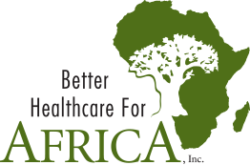Last Friday morning after publishing the previous post (thanks to a close friend of Elizabeth who has friend with a wireless connection) we started for St. Albert’s, stopping first at a Bon Marche supermarket for bread and other groceries to take to the hospital, plus two Coke Zeroes for the road. The cost came to $18.64. Zimbabwe discontinued its own currency, the Zimbabwe dollar, in early 2009 and began using the U.S. dollar, the euro and the rand. Today the main currency is the U.S. dollar, bills only, no coins. Since there are no coins, some stores give change in the form of vouchers for 10 cents, 25 cents and such redeemable only at that store. In this store, Elizabeth was given her change in the form of a pink ballpoint pen and a lollipop.
We drove north out of Harare to Mazoe where we stopped at a fruit stand, leaving with a sack of apples, and some granadillas and tangerines. On our way again, we turned onto the road toward the village of Mburwi, the half way point on our 200 km (120 mi) journey. Along the way we stopped to photograph a woman and her two children and two women, each carrying an enormous bundle of tobacco on her head. Last year, a number of small farmers earned some income growing tobacco. More small farmers grew tobacco this year, and it has resulted in a greater number of burn patients for St. Albert’s.
The day is beautiful. Starkly white clouds populate a deep blue sky like billowing tall ships plying a majestic ocean. Thanks to good rains through early February, the rolling landscape is a pallet of lush greens. The wild grass along the road is tall and replete with wildflowers of orange, white and purple.
We arrived at the doctor’s house at 12:45 p.m.. We take my things to the new guest house, which is equipped with solar lights and a water tank, Elizabeth says, “so that our guests can have a bit of electricity and water that is not freezing” during the region’s frequent power outages. We have a lunch of rice, meat balls, lentils, rugare (a green vegetable) and nyemba (pumpkin). Then Melania, director of the St. Albert’s orphan program, takes me to the home of Ambuya (grandmother) Jackson, an 80-year old woman who cares for a 14-year-old grandson and is assisted by the hospital’s home-based care program. She is one of the poorest of the poor, Melania said.
The Ambuya has no chair to offer me, so I sit on a reed mat in some shade and we talk, as Melania translates. The Ambuya was originally from Malawi, but has lived in Zimbabwe “since the days of Smith.” She worked as a cook on a commercial farm near Mt. Darwin for many years. Her husband built this house before he died some years ago.
The Ambuya can no longer plow, and she can no longer see. How does she spend her time? She washes her plates and clothes. “Usually I don’t do anything. I sit here because I am old,” she said. She has three children. One died; the other two married and returned to Malawi. Would she live with them? “I would like to, but they have not come to take me. I will die in this country.”
Melania said the grandson is HIV-positive. He acquired the virus from his infected, now-deceased, mother during birth, and he is on antiretroviral drugs provided through St. Albert’s. He has no interest in school. He leaves in the morning and returns when he wants, his grandmother said, sometimes not until night. The boy fetches water and sometimes cooks.
She is thankful for the St. Albert’s home-based care program. “It helps sustain us,” she said. “They give me life, the give me food.”
